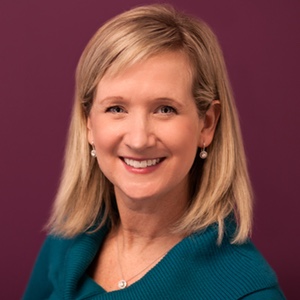FEI Daily: Tell me about the report Deloitte released last month, Critical Audit Matters Make Their Debut!
Lisa Smith: Our intention there was the August 29th filing deadline for June 30th large accelerated filers. And we really wanted to get the data out there, what we were seeing in terms of the CAMs being identified. Because we thought that would be of interest to auditors, as well as companies and investors. So that was the genesis behind publishing the Heads Up. And we also wanted to talk a little bit about our dry-runs and the lessons learned from that process that we had been undergoing over the past year.
FEI Daily: As CAMs are coming out with the off-calendar year filers, what are the trends that you are seeing with your clients?
 Lisa Smith
Lisa Smith: In terms of why a matter was identified as a CAM, we're often seeing that there was a link between the significant judgements made by management, and then our judgment in performing audit procedures, and evaluating the results of those procedures. But we also saw CAMs identified as a result of some complexities in the audit. Whether it be evaluating complex calculations or tax laws.
And so similar to the results for those 52 large accelerated filers that were in our Heads Up, goodwill, revenue and acquisitions and related liabilities were the most common for Deloitte's June 30th large accelerated filers.
And I anticipate that when we push this up to December 31st that our results are going to be similar to these first filings. Although I think we're likely to see more CAMs fall into that other bucket. When we get to year end, I think that'll signal diversity across engagements based on the context and circumstances of a given audit.
FEI Daily: According to the report, the average number of CAMs was 1.8. Did that surprise you?
Smith: That is in line with what I expected.
FEI Daily: What was the experience like with your clients that are off-calendar year filers?
Smith: The experience was positive. The dry-runs performed in the prior year really helped us, management, and the audit committee prepare for the new requirements. So although the CAMs may have changed from the dry-run, the experience of practicing, identifying them and communicating them allowed us to get that valuable experience.
And I think it also allowed management and the audit committee to develop their own process for reviewing the CAM. And identifying those who should be involved from the company in that review process.
So I think that the dry-runs were a huge help when it came to implementing it in a go-live environment.
FEI Daily: Tell me more about the dry-runs. How do you feel they contributed to efficiency of disclosing CAMs officially?
Smith: One thing I would say, the dry-runs gave us the opportunity to practice the art of writing CAMs in a clear and concise manner. It also gave our firm the opportunity to develop a methodology and tools for our practitioners to use as they implemented the new standard. And we were able to refine those tools based on the feedback from the dry-run. And it really made us well prepared when the requirements went live.
FEI Daily: What advice do you have for those who haven’t been through this process yet?
Smith: I would say start early and communicate regularly with management and the audit committee. And many CAMs can be identified as part of planning the audit, although other matters might arise as the year goes by.
For those matters you believe might be a CAM during planning, go ahead and start talking to your clients now. This also gives them the opportunity to reassess their disclosures in these areas to make sure they are clear.
And also gave them the opportunity to work closely internally, and to bring all the appropriate parties to the discussion, like I talked about before. General counsel, investor relations. It's good to make sure all of those parties are also educated about what a CAM is and what might be communicated.
The only thing I can think of that I maybe didn't say is, I think that we did the dry-runs, and the CAMs are all up to date, although for only 52 large accelerated filers. They were consistent with our dry-runs that we performed last year for large accelerated filers with goodwill, revenue, income taxes and acquisitions, topping up that top four list.
So I think the dry-run, the go-live confirmed the consistency. So we'll see what happens when we get more filings in there, but so far it's consistent with what we were expecting.